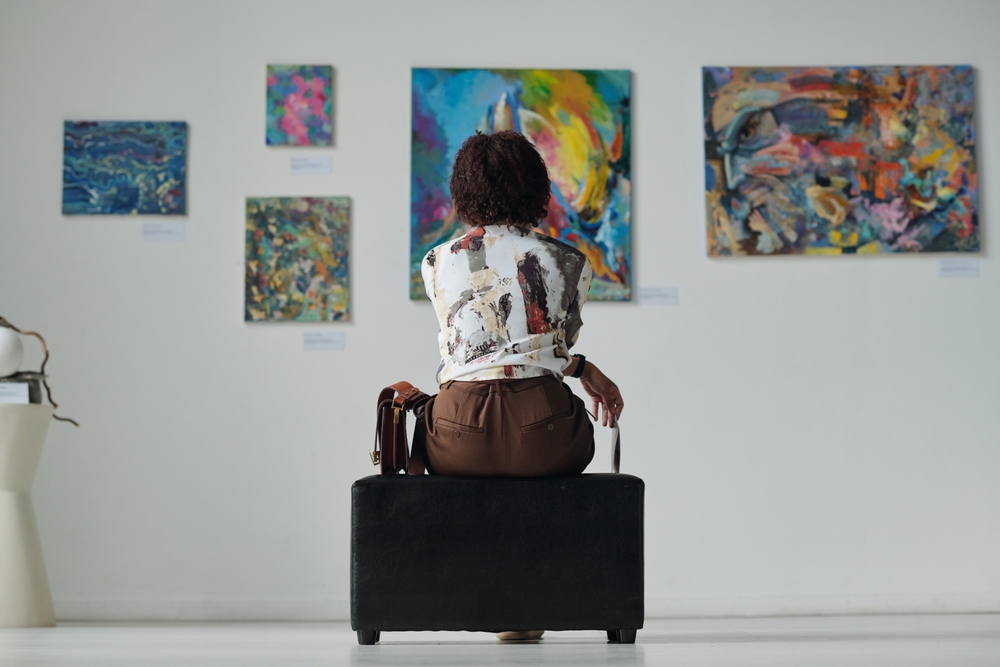Digital Canvas, Billion-Dollar Stakes: How Tech is Revolutionizing Ultra-Wealthy Art Collecting
For centuries, the acquisition of fine art has been the ultimate flex of prestige, a tangible legacy for generational wealth. But in the last decade, a seismic, quiet revolution has reshaped this elite world. From the genesis of digital art investment to the complex nuances of AI-generated masterpieces and blockchain-powered provenance, technology is fundamentally altering what it means to participate in the luxury art market of the 21st century. This isn't just about new tools; it's about redefining art portfolio management for the ultra-wealthy.
The New Investment Frontier: Beyond NFTs and Physical Walls
Once dismissed as speculative curiosities, digital art has swiftly carved a permanent, lucrative niche in the portfolios of serious collectors. With advancements in high-resolution displays, augmented reality, and fractionalized ownership models, investors are no longer constrained by the physical limitations of walls and vaults.
- Blue-chip digital pieces by groundbreaking artists like Beeple and Refik Anadol have commanded millions at prestigious auction houses such as Christie’s and Sotheby’s, solidifying their status as legitimate art market assets.
- NFTs (non-fungible tokens) have evolved beyond initial speculative fervor. They now serve as indispensable digital authentication tools, providing immutable proof of unique ownership, verifiable timestamps, and enabling the enforcement of artist resale royalties through smart contracts. For collectors prioritizing legacy preservation, blockchain-based art offers unparalleled traceability and robust protection from forgery—two of the most persistent and costly issues in traditional fine art collecting. This cryptographic security offers a new level of confidence in asset integrity.
AI-Generated Art: Investment, Innovation, and Intrigue
As generative AI tools like DALL·E, Midjourney, and Runway continue their rapid advancement, a new breed of "AI artists" has emerged, challenging traditional notions of authorship and creative value. While some AI-generated works are being heralded as the avant-garde, others ignite fervent debates within the art market regarding their authenticity, long-term valuation, and artistic integrity.
“There’s a nascent market for it, undoubtedly, but it’s an inherently speculative one,” notes a private curator advising several High-Net-Worth (HNW) individuals in the UAE. “AI art is conceptually fascinating, but for the discerning collector focused on legacy, it often lacks the soul—the human narrative—that drives enduring value. At least for now.”
Collectors engaging with AI art trends are advised to tread with extreme caution. The relative ease of replication, complex copyright issues surrounding algorithms and training data, and the potential for anonymous or misleading creators complicate provenance, future valuation, and the establishment of a clear legal chain of ownership, posing unique risks to art investment portfolios.

Fortifying Fortunes: Digital Reinvention of Art Authentication
Art forgeries are a perennial threat, costing collectors billions annually and eroding trust in the market. However, cutting-edge technologies like machine learning and high-resolution imaging are fundamentally transforming the landscape of fine art authentication, offering unprecedented levels of security:
- AI-powered scanners now possess the capability to analyze minute details—detecting brushstroke patterns, pigment composition and age, and even subtle underdrawings that are imperceptible to the human eye. This level of forensic analysis provides an unparalleled layer of verification.
- Blockchain certificates of authenticity (COAs) are increasingly replacing vulnerable paper provenance. Companies like Verisart and Artory offer tamper-proof digital COAs for both physical and digital artworks, creating an immutable, transparent record of an artwork's lifecycle and ownership history.
- For elite art collectors, these digital tools mean significantly safer acquisitions, streamlined insurance processes, and more reliable estate planning, minimizing legal disputes and preserving generational wealth.
The Evolution of Storage and Display: Private Museums & Digital Vaults
The ultra-wealthy are also at the forefront of embracing advanced digital art vaults—ultra-secure, climate-controlled facilities (often underground or offshore) that provide specialized storage for both physical and digital assets. These are far more than mere warehouses.
- Many contemporary vaults now feature cutting-edge holographic or metaverse-based display rooms, allowing owners to virtually experience and curate their entire collections remotely, from anywhere in the world, with unparalleled realism.
- The creation of digital twins (high-fidelity digital replicas) of real-world physical art is also becoming standard practice for insurance valuations, exhibition planning, and secure travel purposes, adding a crucial layer of asset protection.
The Smart Collector’s Dilemma: Navigating a Hybrid Art Future
Today's luxury art collectors face a compelling dilemma, requiring fluency in both classical art history and emerging tech trends. The future of elite art collecting undeniably lies in hybrid portfolios—thoughtfully combining revered Old Masters, blue-chip contemporary works, and cutting-edge blockchain-based assets. These diverse portfolios will be seamlessly supported by AI tools that not only preserve and authenticate but, in some cases, even actively participate in the creation process.
As more billionaires enter and expand their presence in the art investment space, technology offers both unprecedented convenience and heightened complexity. It promises greater market accessibility and liquidity for certain asset classes, but also introduces new forms of risk, including market volatility for digital assets, novel copyright challenges, and the need for new legal and valuation frameworks. This dynamic landscape necessitates a new breed of art advisors: tech-fluent experts who can guide clients through complex digital provenance, smart contracts, and the nuances of valuing new forms of art.
Final Thoughts: Art's Digital Renaissance
Technology is not merely disrupting the art market; it's profoundly expanding its definition and reshaping its very foundations. For the ultra-wealthy, this translates into a new paradigm of art curation, security, and strategic investment. Whether acquiring a timeless Klimt or a groundbreaking CryptoPunk, the savviest collectors today are not just art historians; they are digitally literate, security-conscious, and resolutely future-ready, proving that true connoisseurship now demands a mastery of both canvas and code.
Sources
{1} "The Rise of Luxury AI Concierges – Where Technology Meets Exclusivity - Passione Lifestyle."
{2} "The Ethical Implications of AI in Warfare - Carnegie Council for Ethics in International Affairs."














